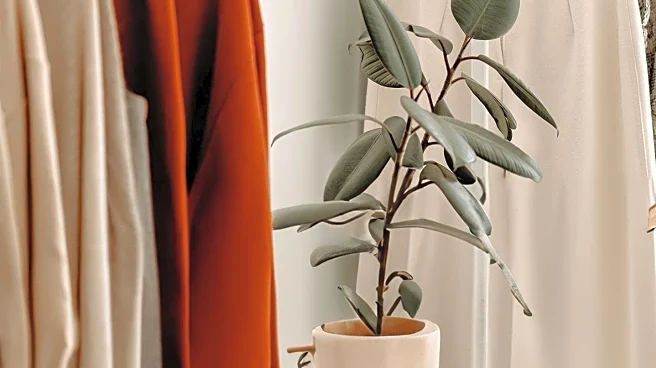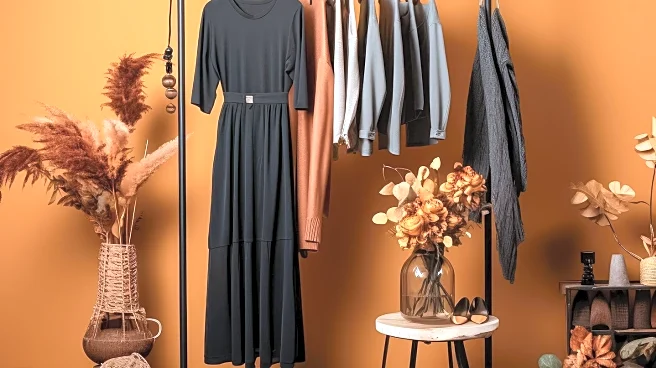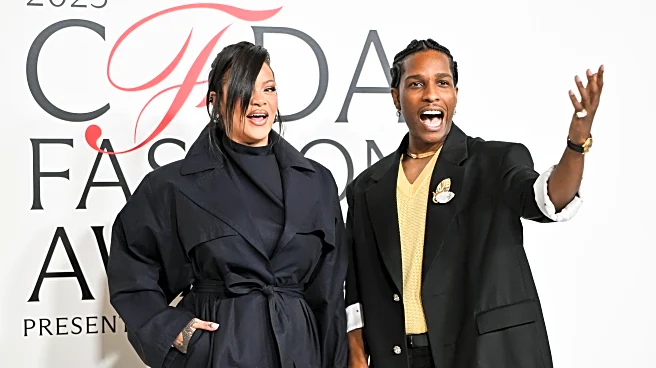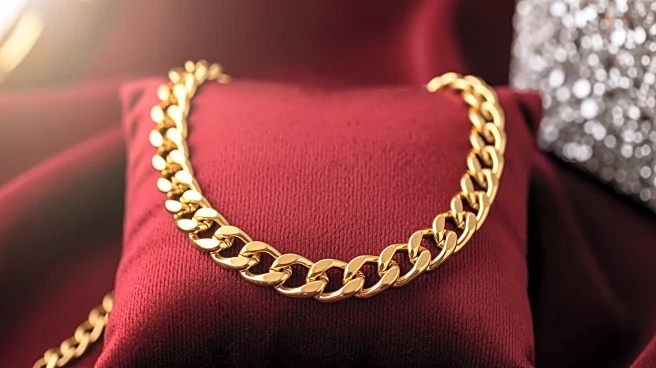What's Happening?
Hybrid fashion is becoming increasingly popular, with designers like Alaïa, Bottega Veneta, and Zara leading the trend. These fashion pieces combine elements such as trousers that transform into skirts,
and tops that wrap like origami, offering versatility and practicality. The trend, which has roots in the 1980s with designer Yeohlee Teng, has evolved over the years, gaining momentum in the 2000s with celebrities like Ashley Tisdale and Miley Cyrus popularizing the skirt-over-pants look. Today, hybrid fashion is seen as a solution for modern multitasking, with celebrities like Kendall Jenner and Jennifer Lawrence embracing the style.
Why It's Important?
The rise of hybrid fashion reflects a shift in consumer preferences towards versatile and practical clothing that can adapt to various settings and activities throughout the day. This trend is significant for the fashion industry as it challenges traditional clothing categories and encourages innovation in design. For consumers, especially those with busy lifestyles, hybrid fashion offers a way to maintain style without sacrificing functionality. The trend also highlights a growing demand for clothing that supports sustainable practices by maximizing the utility of each piece.
What's Next?
As hybrid fashion continues to gain traction, more designers and brands are likely to explore this trend, leading to a wider variety of options for consumers. The fashion industry may see an increase in collaborations between designers and technology companies to create innovative materials and designs that enhance the functionality of hybrid clothing. Additionally, retailers may need to adapt their marketing strategies to highlight the versatility and practicality of these fashion pieces to appeal to a broader audience.
Beyond the Headlines
The hybrid fashion trend also raises questions about the future of fashion design and the role of technology in creating adaptable clothing. As consumers become more conscious of sustainability, the demand for multifunctional garments that reduce the need for multiple purchases could drive further innovation in the industry. This trend may also influence cultural perceptions of fashion, as traditional boundaries between different types of clothing become increasingly blurred.












